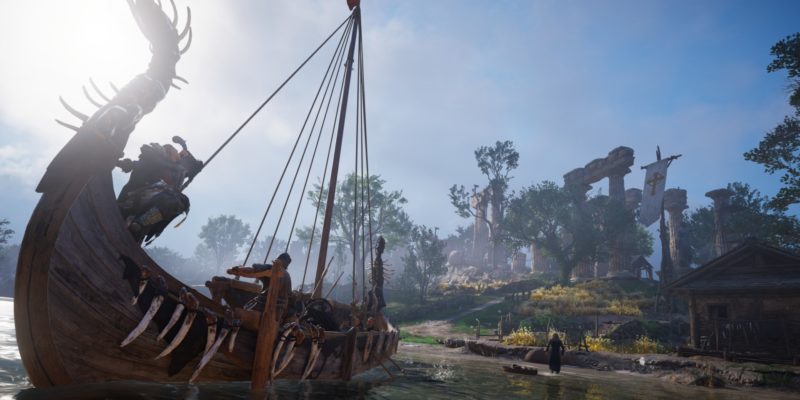
Assassin’s Creed Valhalla is the twelfth major installment in Ubisoft’s flagship open-world, action-adventure series. Indeed, after reviewing Assassin’s Creed Odyssey back in 2018, I have been eagerly looking forward to what this latest offering in the franchise has in store. After all, how often do you get to play as a viking, right?
In many ways, Assassin’s Creed Valhalla succeeds in delivering an amazing experience, and it’s one that should satisfy long-time fans and newcomers. However, there are a few issues that might become problematic during your playthrough.
Honor and glory
Assassin’s Creed Valhalla follows the story of Eivor the Wolf-Kissed, a Viking warrior from Norway. While I chose the female Eivor, you can freely switch between the male or female versions when you please.
During the prologue and first act, Eivor seeks revenge on the leader of a rival clan. Eventually, she and her sworn brother Sigurd have to leave their home and set sail for England. The merry band even includes Basim and Hytham, two members of the Hidden Ones/Assassins Order, allowing Eivor to learn their tricks of the trade.
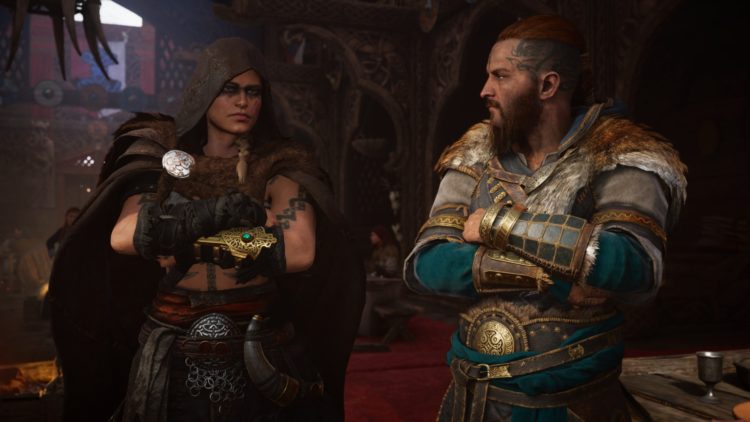
Aiming to gain a foothold in Anglo-Saxon territory, Eivor is tasked with building and growing a settlement. You’re presented with several options that can be constructed such as an item shop, blacksmith, stables, shipyard, barracks, and more. The facilities you complete unlock additional quests to help you learn about your settlement’s inhabitants.
Likewise, you’ll gain additional mechanics and features. For instance, the barracks lets you create your personal Jomsviking. This avatar can equip the same gear you own, and they can be recruited by other players. Should they become a part of another player’s raiding crew, they’ll return to you with some bonus silver.
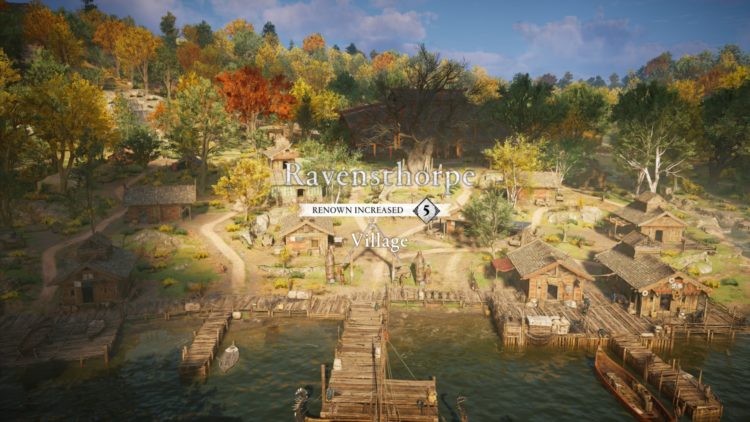
Raiding and razing
To continue growing your settlement, you’ll have to raid the English countryside. Indeed, Assassin’s Creed Valhalla lets you prey on hapless foes by burning villages, sacking monasteries, and capturing plunder. Just watch out, because you’re not allowed to kill a lot of civilians. That’s probably the antithesis of being a Viking.
Then again, we have to consider that the game is set in 873 A.D., many years after the sons of Ragnar Lothbrok — the leaders of the Great Heathen Army — laid waste to the forces of Northumbria, Mercia, and East Anglia. As such, it may be a time period when the Norsemen and Anglo-Saxons were locked in a struggle, but many had also grown used to trading. In a few cases during the story, a semblance of friendship or respect exists between different cultures, tribes, and peoples.
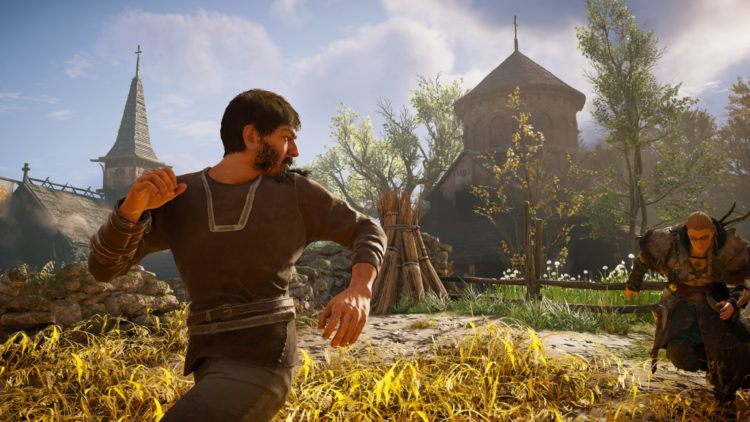
Speaking of the antithesis to being a Viking, it’s a reach to call this an Assassin’s Creed game — emphasis on the “assassin” part. Given that Vikings would announce their arrival by blowing a horn, we know that they weren’t prone to sneaking around. There are even missions when characters complain about hiding in the bushes instead of carving a path of bloody carnage.
Still, Assassin’s Creed Valhalla manages to blend this concept well enough with the usual Hidden Blade/assassination gameplay we’ve come to know. My only gripe here is that civilians don’t really do much. Sure, they scream and yell when you murder someone in the streets. But guards that are further away won’t bother you.
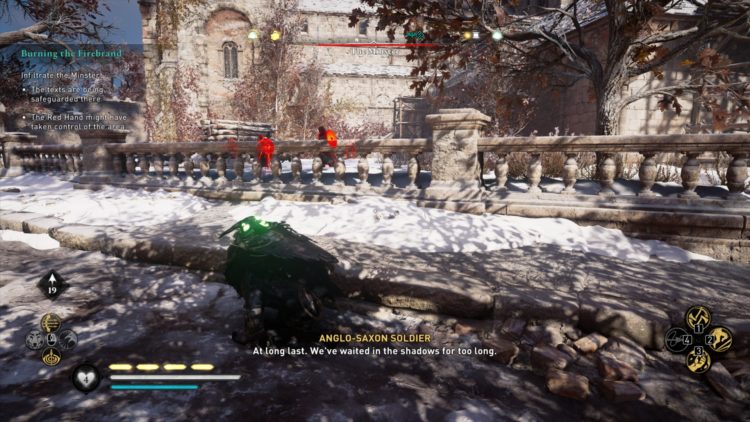
Assassin’s Creed Valhalla‘s fast-paced combat
If you don’t like the silent but deadly approach, you can always head into the thick of the fighting. Assassin’s Creed Valhalla‘s combat truly shines here, because attacks and animations are fast-paced and fluid. You can quickly parry or dodge a strike, stagger a foe, and then launch a vicious combo.
If an opponent’s defense breaks, you open them up for a finishing move. The animations themselves are different depending on the soldier’s archetype. For example, a spear-wielding warrior might find that polearm lodged in their belly. Meanwhile, a Goliath (who loves throwing you around) would get choked until they collapsed. Make no mistake, if Origins and Odyssey focused heavily on the action, then Valhalla takes it up a notch due to its multiple engagements and battles. There are even sieges in the game.
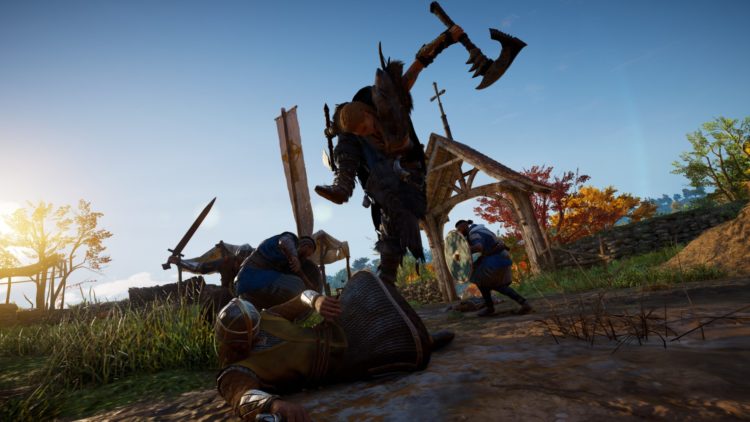
Combat is complemented by two factors. The first is that every weapon type has its own attack pattern and combo, so using a flail would be vastly different from swinging a claymore or ax. Your playstyle would vary if you’ve got a two-handed weapon, a one-hander and shield setup, or when you’re dual-wielding. You can even dual-wield two heavy weapons (or two shields).
The second is that the skill tree has numerous nodes that give stat boosts, passive perks, and active skills. My favorites tend to be the “Stomp” and “Battleground Bolt” skills. The former is self-explanatory — you stomp on a downed opponent to deal tremendous damage. The latter, meanwhile, lets you throw a dropped weapon like a Hollywood action hero. Oh, and these skills are also separate from the abilities you obtain by finding tomes. Thanks to the aforementioned weapon types, combos, counters/finishers, abilities, and calling on your raiding party, Assassin’s Creed Valhalla‘s combat is extremely flashy, unbelievably satisfying, and ridiculously fun.
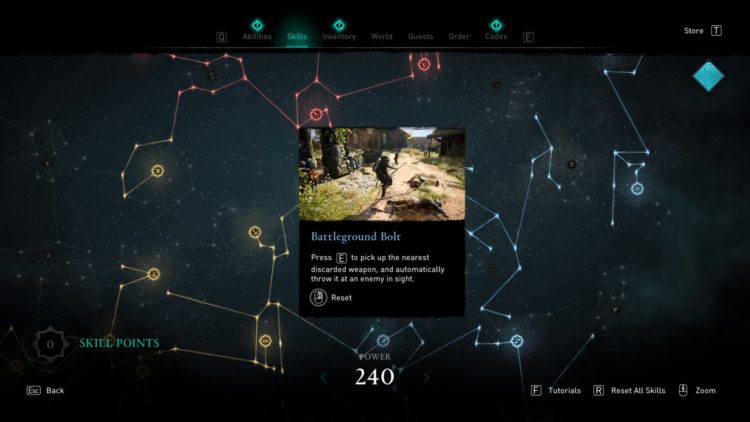
That repetitive formula
If there’s one glaring flaw that the Assassin’s Creed franchise is known for, it’s that it has become too formulaic and repetitive. Make no mistake: if Assassin’s Creed Valhalla‘s combat and assassinations excite you, then the game’s mission progression system will become extremely tedious.
When starting the arc or “saga” in a new region, Eivor’s first quest usually involves meeting an NPC. Then, you walk or ride with that character as they give you extra details. Next, there’s a quick skirmish (maybe against a dozen opponents or some wild animals). That’s followed by more exposition and several short quests. In some cases, there might even be a crime scene recreation, as if you were watching CSI: Jorvik. All of your efforts culminate in major siege battles, and these too follow a typical pattern. When this is completed, you pick another region.
There were a few minor issues, too, such as some slowdown when swapping between a gamepad and a mouse and keyboard setup during regular gameplay. Additionally, a few quests were bugged, though they could be fixed by reloading an autosave. Moreover, mounts could sometimes get stuck and be unable to jump down off a ledge (you need to gain momentum and have them galloping at full throttle first). Perhaps the most glaring bug I encountered was related to the Thousand Eyes Shop (akin to Odyssey‘s Oikos of the Olympians). Although I was able to interact with the vendor early in my playthrough, I eventually realized that I could no longer talk to the NPC after some time had passed. This locked me out of purchasing items via the opal currency (this game’s version of orichalcum). I’ve even finished dozens of arcs and upgraded my settlement’s level to no avail.
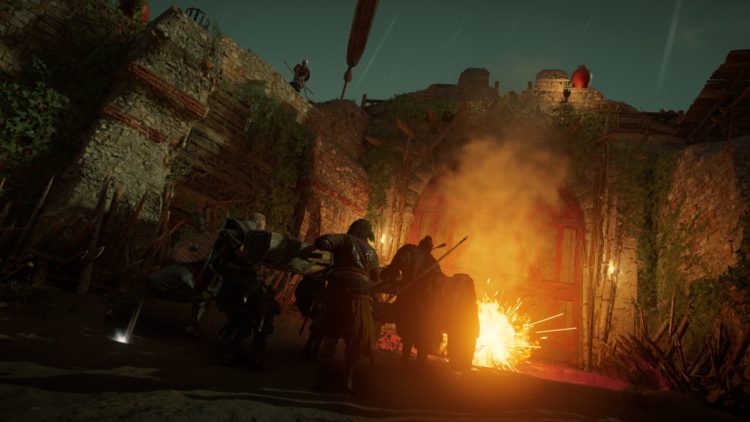
Worthwhile distractions
If you don’t want a tedious and tiresome campaign — one that can take roughly 40 hours for the main narrative alone — then you might want to mix things up with the distractions that Assassin’s Creed Valhalla offers. Norway and England both have huge maps for you to explore (and there are other areas which I won’t spoil here). These regions have collectibles that the series is known for. You could find new equipment, settlement supplies, upgrade materials, extra skill points, sidequests, and more.
There are also standing stone puzzles to complete, deadly beasts to hunt, infamous bosses to take down, and many other side activities. Oh, and let’s not forget your assassination targets, the members of the Order of the Ancients, and zealot followers. Some of them are encountered during storyline arcs while others are found as you’re freely roaming the land.

Likewise, there are minigames for you to try out. You could bet on the drinking minigame or engage in “flyting,” a Medieval rap battle of sorts. The latter even increases your charisma which opens up new dialogue options.
There’s also Orlog, a game of dice, with some magic thrown in the mix. I must say that I loved playing this and collecting the various God Favors from defeated opponents. Think of this as something akin to The Witcher‘s Gwent or Final Fantasy VIII‘s Triple Triad.
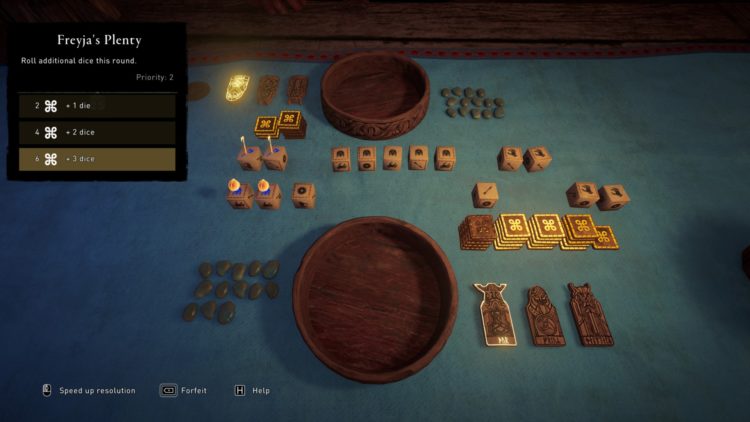
Eivor’s epic Viking saga
In the end, Assassin’s Creed Valhalla manages to surprise, owing to a new level of immersion. As you sail along pristine rivers and craggy shorelines, raiders boisterously share stories and tall tales. While completing quests, people compare and contrast their Norse pagan faith and Christianity. There are so many references to ancient rituals, cultural practices, and traditions that you’d feel that these characters and beliefs have come to life. In relation to that, legendary personages such as Alfred the Great, Harald Fairhair, and Ivar the Boneless get their time to shine.
Furthermore, as mentioned in our technical review, Assassin’s Creed Valhalla is visually stunning. Just be forewarned that it might be a little demanding as well. Using 4K resolution, my Nvidia GTX 1070 Ti GPU and Intel i7-7700K CPU could only manage 30 FPS with custom settings. Nevertheless, from the frozen fjords of Norway and the green pastures of England to other places you might visit, the sights and sounds are marvelous to behold. Everything seemed so picture-perfect that I often found myself in awe of my surroundings — I couldn’t stop using photo mode to capture moments. Once again, Ubisoft has crafted a truly captivating world. Plus, you can switch to “follow the road/river” and cinematic mode to sit back and relax.
Although I did have a few qualms with how the missions/arcs were structured, towards the end, I felt that the entire journey in Assassin’s Creed Valhalla was remarkable. I won’t spoil how Eivor’s tale unfolds, but it truly is an epic Viking saga.
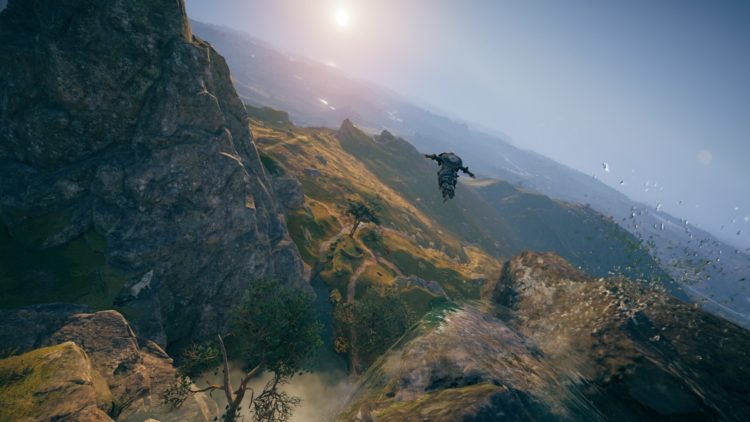
Assassin’s Creed Valhalla
Assassin’s Creed Valhalla’s mission structure can be a little tedious at times. However, it still manages to exhilarate and excite thanks to its wonderful visuals, vivid landscapes, side activities, and brilliant combat mechanics.



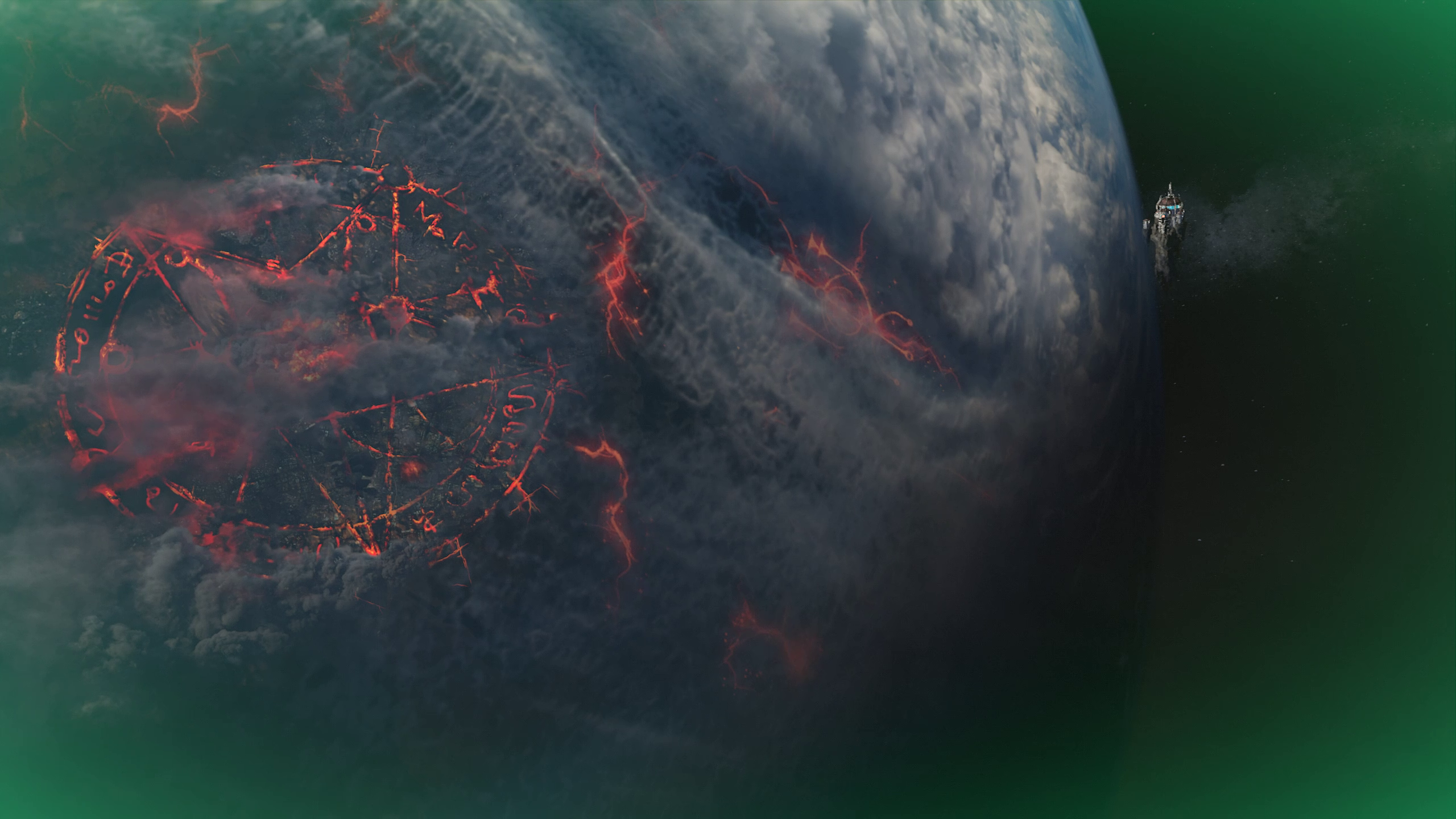
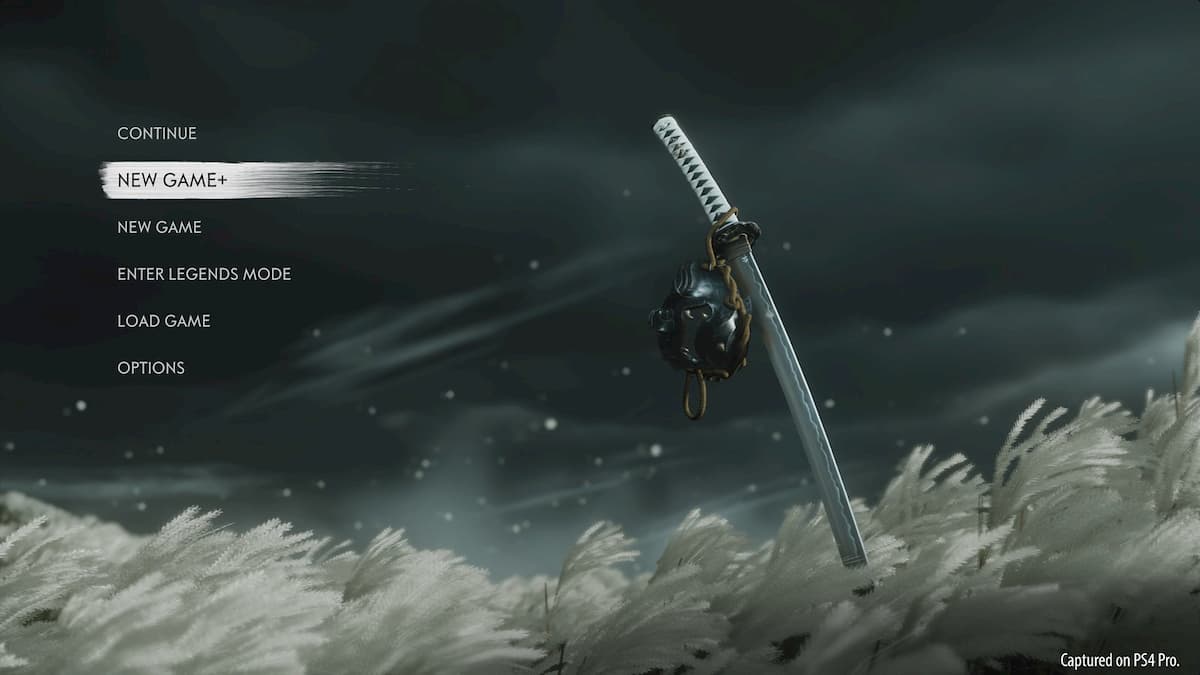


More Stories
Doom Eternal review
Review: The Last of Us Part II complicates the idea of right and wrong
Dirt 5 review